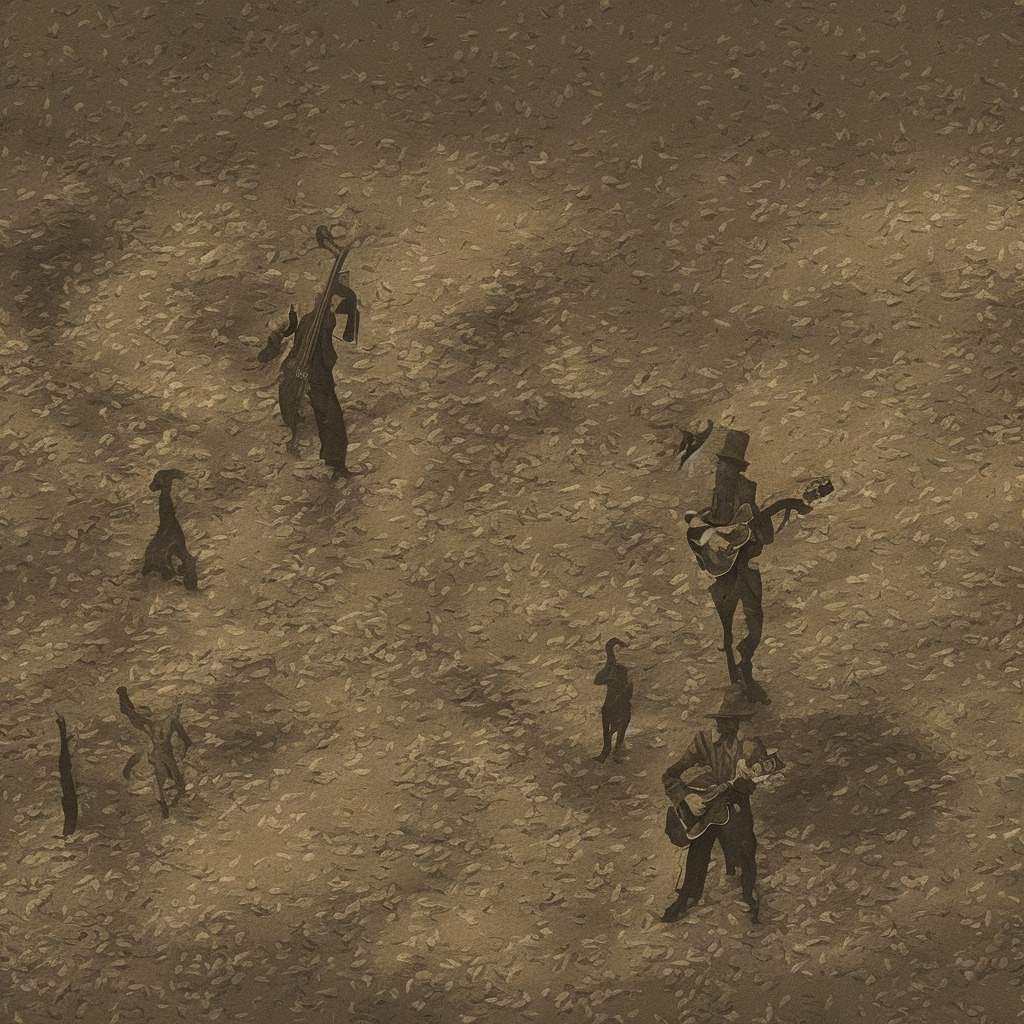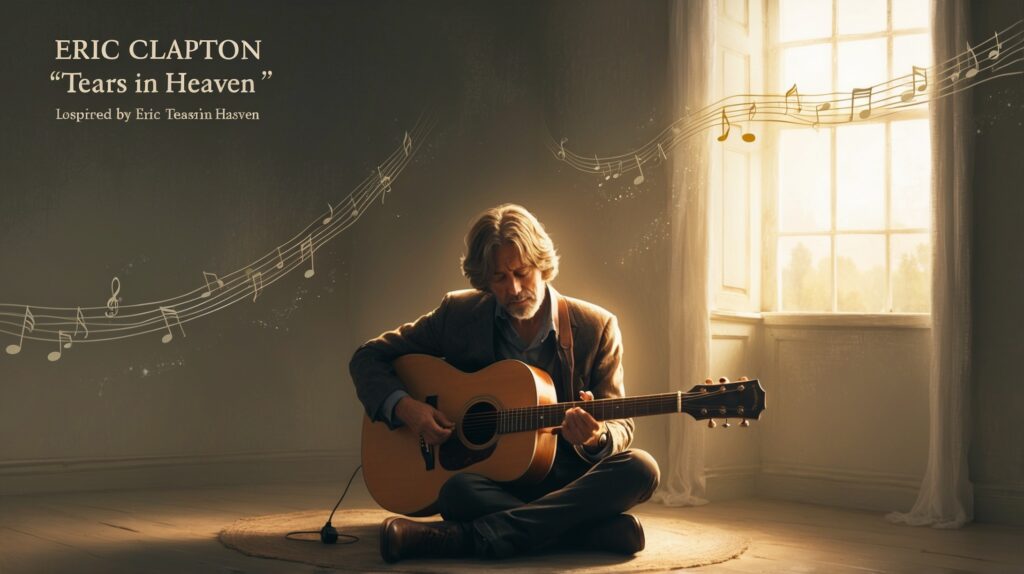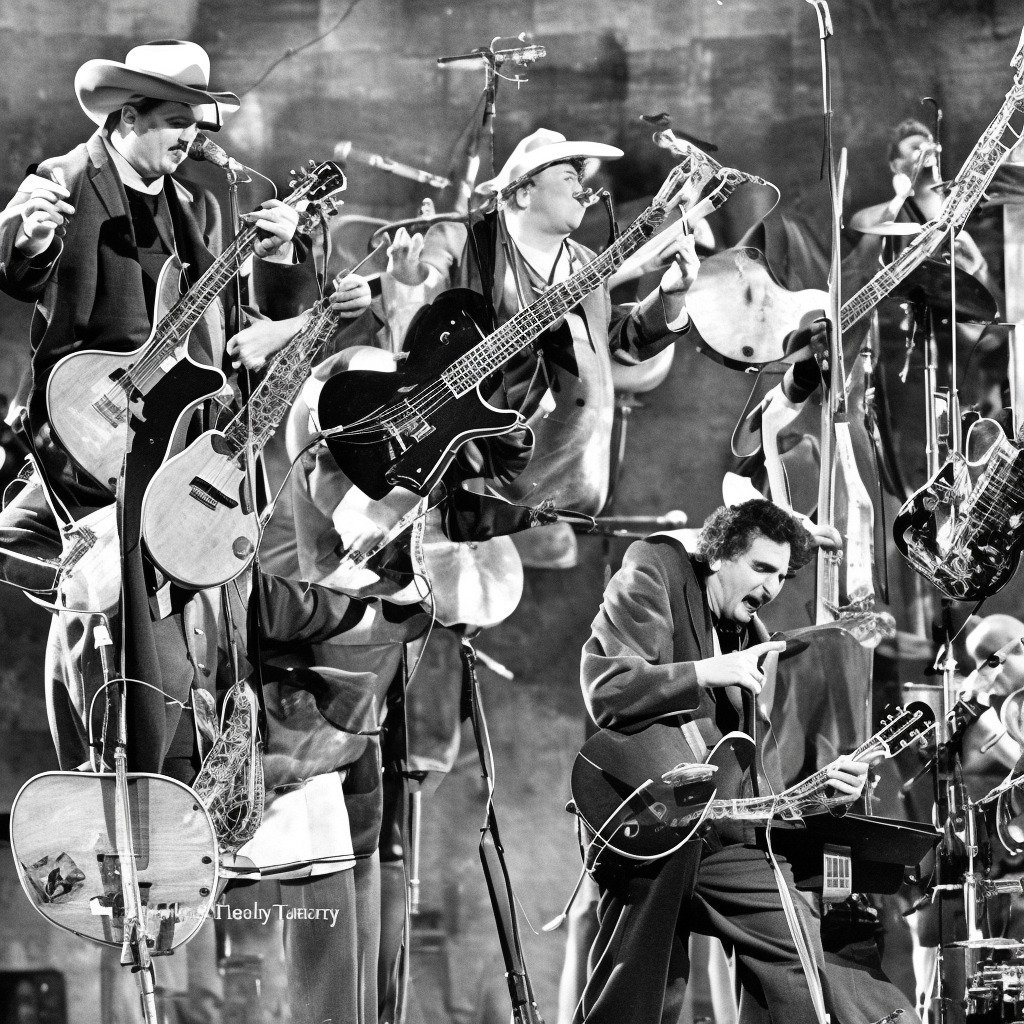🎸Did you know? Robert Johnson’s “Cross Road Blues” inspired the myth of him selling his soul to the devil for his musical talent! 😈Get ready to jam at the crossroads with this blues classic!🔥 #RobertJohnson #CrossRoadBlues #BluesLegend #MusicTrivia Read about it: tinyurl.com/bdeu7bux
Encountering the Enigmatic Robert Johnson
Dive into the crossroads of Robert Johnson’s enigmatic legacy: the Mississippi Delta musician who shaped blues and rock with his guitar virtuosity, legendary influences, and a mythos that intertwines with the devil himself.
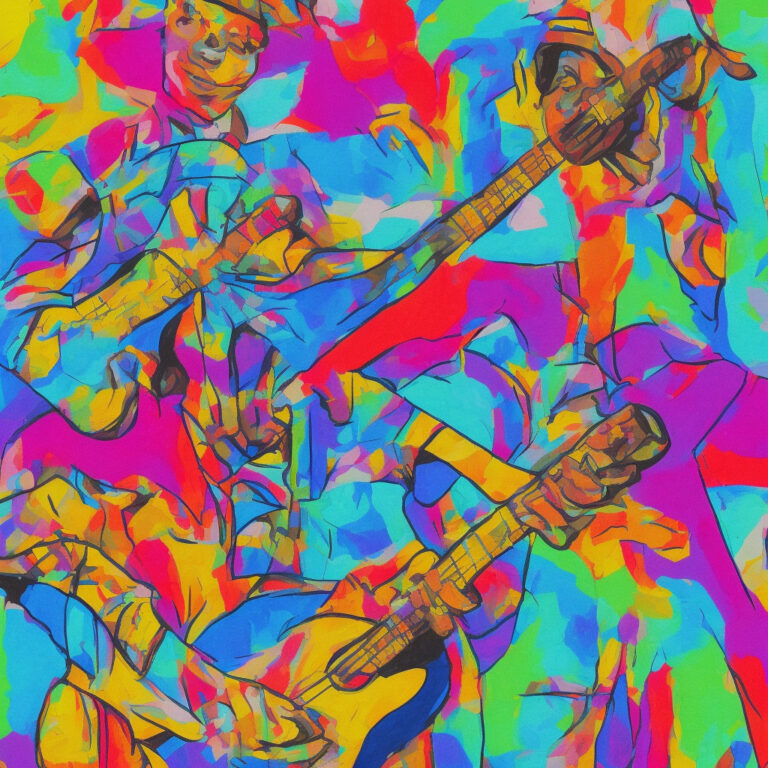
Robert Johnson, a titan of blues, is an essential artist for anyone seeking to explore the depths of Mississippi Delta blues. Born in 1911 in Hazlehurst, Mississippi, Johnson became well-known for his guitar virtuosity and signature voice. His mythos is only amplified by the mystery surrounding his life and the legend of his alleged deal with the devil to obtain his musical prowess. Despite his untimely death at the age of 27, Johnson’s brief career left an indelible mark on the blues and rock’n’roll, as his influence is recognized by many legendary musicians such as Eric Clapton, Keith Richards, and Jimi Hendrix.
One of Johnson’s most enduring songs is “Cross Road Blues,” a haunting ode to both physical and metaphorical crossroads. The song’s lyrics depict a man at the crossroads, asking for the devil to appear and grant him the ability to play the blues like no other in exchange for his soul. “Cross Road Blues” has been covered numerous times, notably by Cream, whose rendition became a classic rock staple.
Johnson’s music has been recognized for its influence on the development of blues and rock music. In 1986, he was inducted posthumously into the Blues Foundation Hall of Fame, and in 1990, Johnson was inducted into the Rock and Roll Hall of Fame as an Early Influence. Moreover, the Grammy Awards awarded a Lifetime Achievement Award to Johnson in 2006. Although we can celebrate Johnson’s accolades, we must also acknowledge that, like any artist, Johnson has his critics. Some argue that his alleged pact with the devil and influence on famous musicians have overshadowed his actual musical contributions.
Despite a limited discography of just 29 songs recorded during his lifetime, Johnson’s legacy continues to be celebrated today. The release of his compilation album “King of the Delta Blues Singers” in 1961 and “The Complete Recordings” in 1990 have only served to introduce Johnson’s music to new generations of fans. Indeed, the myth and the man have become almost inseparable, which only adds to the allure of his music.
In conclusion, Robert Johnson’s impact on both blues and rock music is undeniable. His song “Cross Road Blues” is a testament to the enduring legacy he left behind, capturing the imagination of listeners for decades to come. While critics may argue that some elements of Johnson’s story overshadow his actual music, one cannot deny the talent and influence that he has had on countless musicians and fans alike. As an experienced music blogger, it is hard not to appreciate the fascinating enigma that is Robert Johnson, and his inextricable connection to the very roots of American music.
Charting the Blues
“Cross Road Blues” – The unsung 1937 gem that shaped the blues and rock landscape, standing the test of time through iconic covers and accolades.

Released in 1937, “Cross Road Blues” by Robert Johnson, a legendary blues musician, did not experience the same chart success as many popular songs of today. However, its influence on future musicians and significant contribution to the development of the blues genre cannot be denied.
At the time, the song did not make it onto any significant charts, primarily because charts like the Billboard Hot 100 did not exist until 1958. Additionally, “Cross Road Blues” was released as a 78 RPM record, which was the standard format for music at the time. In the pre-rock era, it was not unusual for songs like Johnson’s to go unnoticed by the mainstream music charts.
Though it didn’t achieve any charting milestones during its initial release, “Cross Road Blues” has since gained legendary status in the world of blues music. The song’s powerful impact on blues and rock artists can be felt throughout the decades following its release. It has been covered by numerous artists, including Cream in 1968, whose version of the song, titled “Crossroads,” peaked at number 28 on the Billboard Hot 100 chart, demonstrating the enduring appeal of Johnson’s original composition.
In retrospect, “Cross Road Blues” holds a special place in music history, as it was inducted into the Blues Foundation’s Hall of Fame in 1998 and the Grammy Hall of Fame in 1999. Furthermore, the song’s lasting influence has been recognized by Rolling Stone, which ranked it at number 10 on their list of “The 100 Greatest Guitar Songs of All Time” in 2008.
Though its initial release did not yield any chart-topping success, “Cross Road Blues” by Robert Johnson has undeniably made a lasting impact on the music world, shaping the future of blues and rock music for generations to come.
Delving into the Soul of “Cross Road Blues”
I went down to the crossroad, fell down on my knees
Asked the Lord above “Have mercy, now save poor Bob, if you please”
Yeeooo, standin’ at the crossroad, tried to flag a ride
Ooo eeee, I tried to flag a ride
Didn’t nobody seem to know me, babe, everybody pass me by
Standin’ at the crossroad, baby, risin’ sun goin’ down
Standin’ at the crossroad, baby, eee, eee, risin’ sun goin’ down
I believe to my soul, now, poor Bob is sinkin’ down
You can run, you can run, tell my friend-boy, Willie Brown
You can run, you can run, tell my friend-boy, Willie Brown
That I got the crossroad blues this mornin’, Lord, baby I’m sinkin’ down
And I went to the crossroad, mama, I looked east and west
I went to the crossroad, baby, I looked east and west
Lord, I didn’t have no sweet woman, ooh well, babe, in my distress
The lyrics of “Cross Road Blues” are steeped in the folklore and legends surrounding its creator, Robert Johnson, and the time in which it was written. These lyrics tell the tale of a man at a metaphorical crossroads in his life, desperately seeking help and guidance. This sense of desperation is especially poignant considering the era in which the song was written, the 1930s, a time marked by the Great Depression and deep social and economic struggles throughout America.
The song’s protagonist finds solace at the crossroad, where he pleads with the Lord above for help. This could be interpreted as a reflection of the prevailing sentiment of the time – a desperate cry for some divine intervention to save the people from the hardships and struggles they were facing. The mention of the rising sun going down and sinking down further signifies the waning hope during this troubled period.
Furthermore, the lyric “Didn’t nobody seem to know me, babe, everybody pass me by” encapsulates the feelings of loneliness and isolation experienced by many during the Great Depression. In a time when people were struggling to make ends meet, it was not uncommon for individuals to feel overlooked and abandoned by society.
In “Cross Road Blues”, Robert Johnson masterfully captures the spirit of the time, while also alluding to his own personal struggles and the legends that would come to define his legacy. The song’s haunting lyrics continue to resonate with listeners today, embodying the timeless themes of hope, despair, and spiritual longing.
A Look into the Visual World of “Cross Road Blues”
Dive into the enduring visual legacy of “Cross Road Blues,” where haunting adaptations and fan tributes breathe life into the myth of Robert Johnson’s infamous deal with the devil.
Given that the legendary Robert Johnson recorded “Cross Road Blues” in 1936, there is no official music video for the song. However, the song’s enduring legacy has inspired countless fan videos, tributes, and even some film adaptations touching on Johnson’s alleged deal with the devil at the crossroads.
The most notable visual adaptation of “Cross Road Blues” comes from the 1986 film “Crossroads,” starring Ralph Macchio as a young blues guitarist who seeks out the original sheet music for the song. During his journey, he encounters the character Willie Brown (played by Joe Seneca), who claims to have been present when Johnson made his infamous deal with the devil. The film features a climactic guitar duel between Macchio’s character and a demonic guitarist, played by real-life virtuoso Steve Vai, which draws heavily on the mythology surrounding “Cross Road Blues.”
In addition to the film, many fans have created their own visual tributes to “Cross Road Blues” by piecing together vintage footage and photographs of the Mississippi Delta blues scene in the 1930s. One standout example is a YouTube video created by user “DeltaSnake,” who used authentic black-and-white images and footage to create a captivating and immersive visual presentation that brings the iconic song to life.
Another tribute worth mentioning is a haunting animated video by artist Sophie Crumb, daughter of renowned illustrator Robert Crumb. The video features striking illustrations of Johnson, his guitar, and the eerie crossroads where he is said to have made his pact. The moody atmosphere created by the visuals complements the song’s lyrics and conveys the sense of desperation and darkness that has become synonymous with Johnson’s story.
These various adaptations of “Cross Road Blues” showcase the enduring impact and fascination with the song’s mythology. Though we’ll never have an official music video, the creativity and passion that fans continue to bring to the table ensure that the song’s legacy will forever be honored and remembered in the visual realm.
The Legendary Robert Johnson: More Than Just “Cross Road Blues”
Robert Johnson, the enigmatic and charismatic force behind “Cross Road Blues,” is a name that carries significant weight in the annals of blues history. Known as the “Grandfather of Rock ‘n Roll,” Johnson was instrumental in shaping the sound of the blues genre that would later inspire countless musicians. Born in 1911 in Hazlehurst, Mississippi, Johnson’s short yet influential career was shrouded in mystery and folklore, including the famous tale of him selling his soul to the devil at a crossroads in exchange for his extraordinary guitar skills.
Aside from “Cross Road Blues,” Johnson’s other notable compositions include classics like “Sweet Home Chicago,” “Love in Vain,” and “Hellhound on My Trail,” each showcasing his unparalleled skills as a guitarist and lyricist. Moreover, his unique vocal stylings, marked by a haunting falsetto, have left an indelible mark on contemporary blues and rock music. Though Johnson’s life was tragically cut short at the age of 27, the legacy of his creativity and musicianship continues to be celebrated by fans and fellow artists alike.
A Legacy of Accolades and Impactful Appearances
Cross Road Blues: A timeless classic that transcends generations, weaving through music history with accolades, pop culture appearances, and inspiring covers.
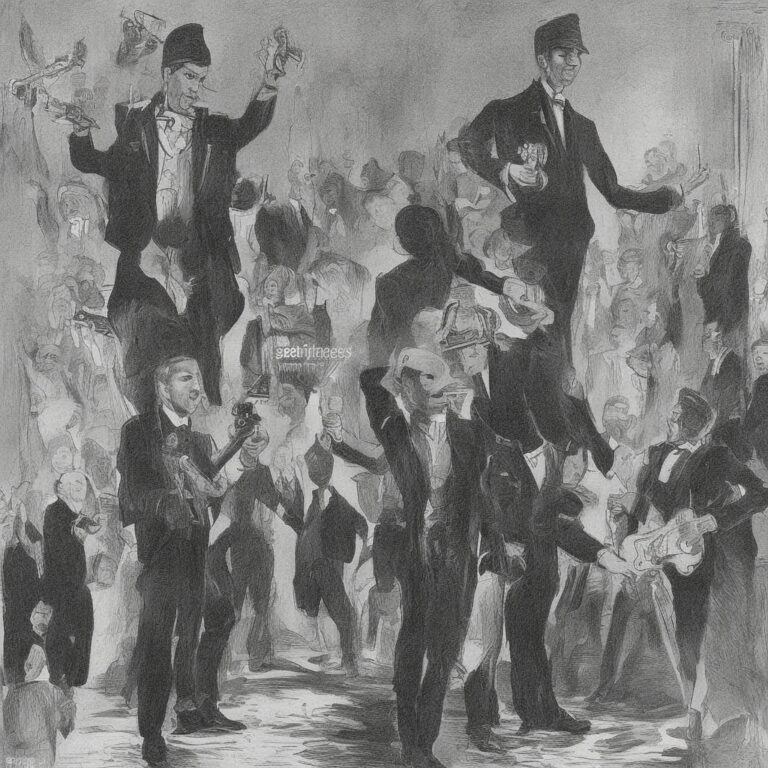
Despite its humble beginnings, “Cross Road Blues” has gone on to receive numerous accolades and honors over the years. In 1998, the song was inducted into the Grammy Hall of Fame, a testament to its lasting influence and cultural significance. Moreover, Rolling Stone magazine ranked it at number 3 on their list of the 100 Greatest Guitar Songs of All Time in 2008. The song was also inducted into the Blues Foundation Hall of Fame in 1983 as a “Classic of Blues Recording.”
“Cross Road Blues” has also made its fair share of appearances in popular culture. The song was notably featured in the 1986 film “Crossroads,” which starred Ralph Macchio as a young guitarist searching for the lost song of Robert Johnson. The movie’s plot was inspired by the myth surrounding Johnson and his supposed deal with the devil at a crossroads to gain his extraordinary musical talents. The song has also been used in various TV shows, such as the popular supernatural drama series “Supernatural,” which aired an episode titled “Crossroad Blues” during its second season.
Over the years, “Cross Road Blues” has been covered and reimagined by several talented artists. Arguably the most famous rendition is by the legendary British rock band Cream, led by Eric Clapton. Their adaptation, titled “Crossroads,” was recorded live in 1968 and showcased Clapton’s incredible guitar prowess. This version of the song was also inducted into the Grammy Hall of Fame in 1999. Other notable covers include renditions by Fleetwood Mac’s Peter Green, John Mayer, and Joe Bonamassa, who all contributed their unique style to the timeless classic.
As demonstrated by its accomplishments and various appearances in media and cover versions, “Cross Road Blues” has undeniably made a lasting impact on music history. The song not only solidified Robert Johnson’s status as a blues legend but has also continued to inspire generations of musicians and captivate audiences worldwide.
Diving into the Musical Depths
“Cross Road Blues” demonstrates an impeccable mastery of guitar skills and features a unique vocal delivery that resonates with listeners even today. The song is composed in the key of A, employing a standard I-IV-V chord progression that is common in blues music. The chords used in this song are A7, D7, and E7. This progression sets the foundation for Johnson’s soulful and expressive guitar playing.
One of the fascinating aspects of “Cross Road Blues” is its tempo structure. The song has an overall moderate tempo, featuring a steady beat that lays the groundwork for Johnson’s intricate fingerpicking patterns. The tempo is set at approximately 80 beats per minute (BPM), giving the song a laid-back, simmering feel that allows the listener to absorb every nuance of the music.
The structure of the song is based on a classic 12-bar blues format. Each verse is composed of three lines, with the first two lines being repeated and the third line serving as the resolution. The lyrics are delivered in a call-and-response manner, with Johnson’s guitar mimicking his vocal phrases. This style of storytelling through the lyrics and accompanying guitar lines is a hallmark of Johnson’s work and the blues genre itself.
Another notable aspect of “Cross Road Blues” is the use of a slide, a technique in which a glass or metal tube is worn on the guitarist’s finger and slid along the strings to create a smooth, gliding sound. Johnson’s skillful use of the slide contributes to the song’s haunting and eerie atmosphere, further accentuating the song’s theme of desperation and crossroads.
The guitar tuning used in “Cross Road Blues” is open G, also referred to as “Spanish tuning.” This tuning allows Johnson to play full chords with a single finger, thus enabling him to focus on his intricate fingerpicking and slide techniques. The open G tuning is composed of the following notes: D-G-D-G-B-D. By employing this specific tuning, Johnson was able to cultivate a distinct sound that set him apart from other blues musicians of the time.
In summary, “Cross Road Blues” showcases Robert Johnson’s exceptional musicianship through its use of a standard I-IV-V chord progression, moderate tempo, 12-bar blues structure, slide technique, and open G tuning. The combination of these elements results in a powerful and emotionally charged song that continues to captivate listeners and influence musicians to this day.

